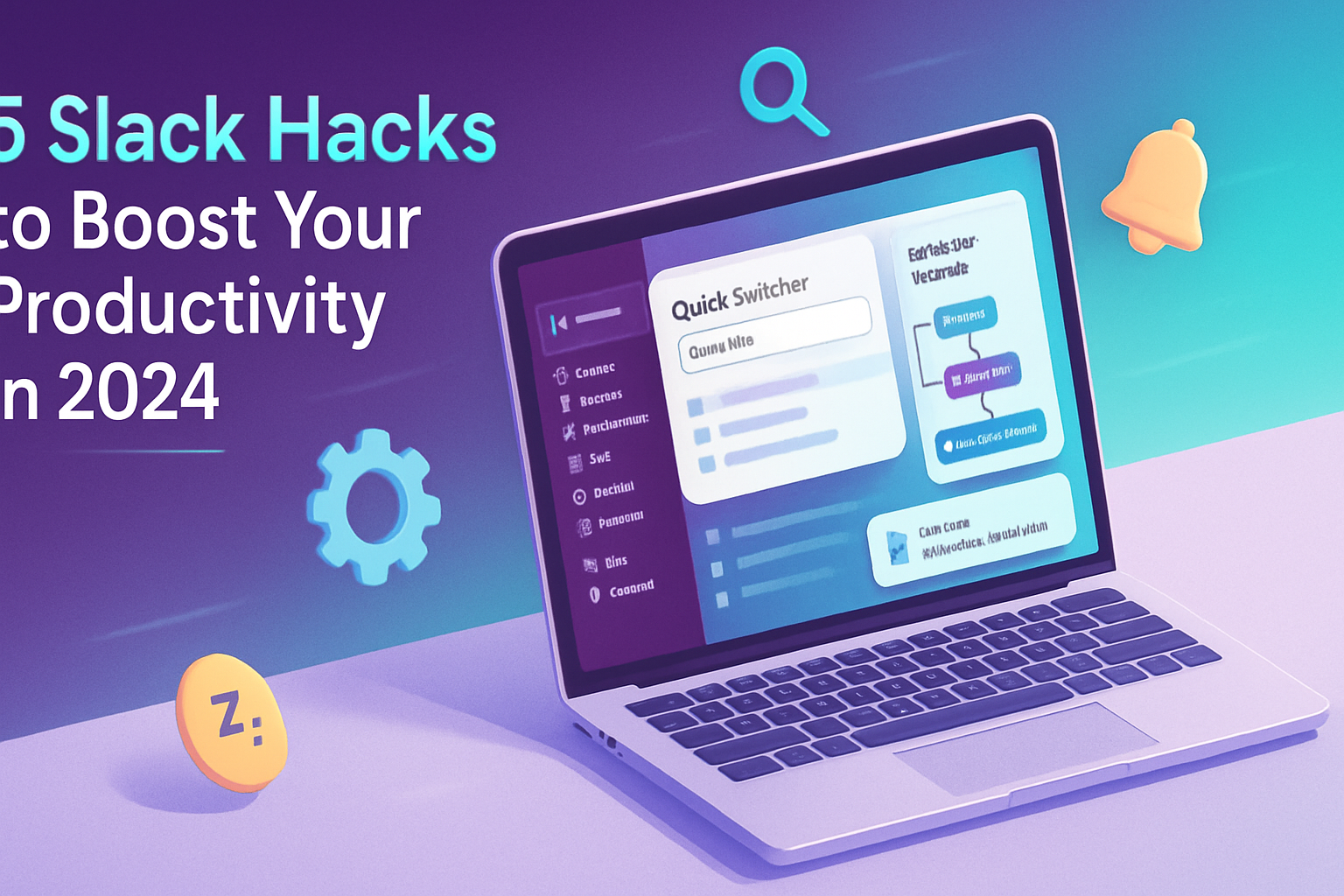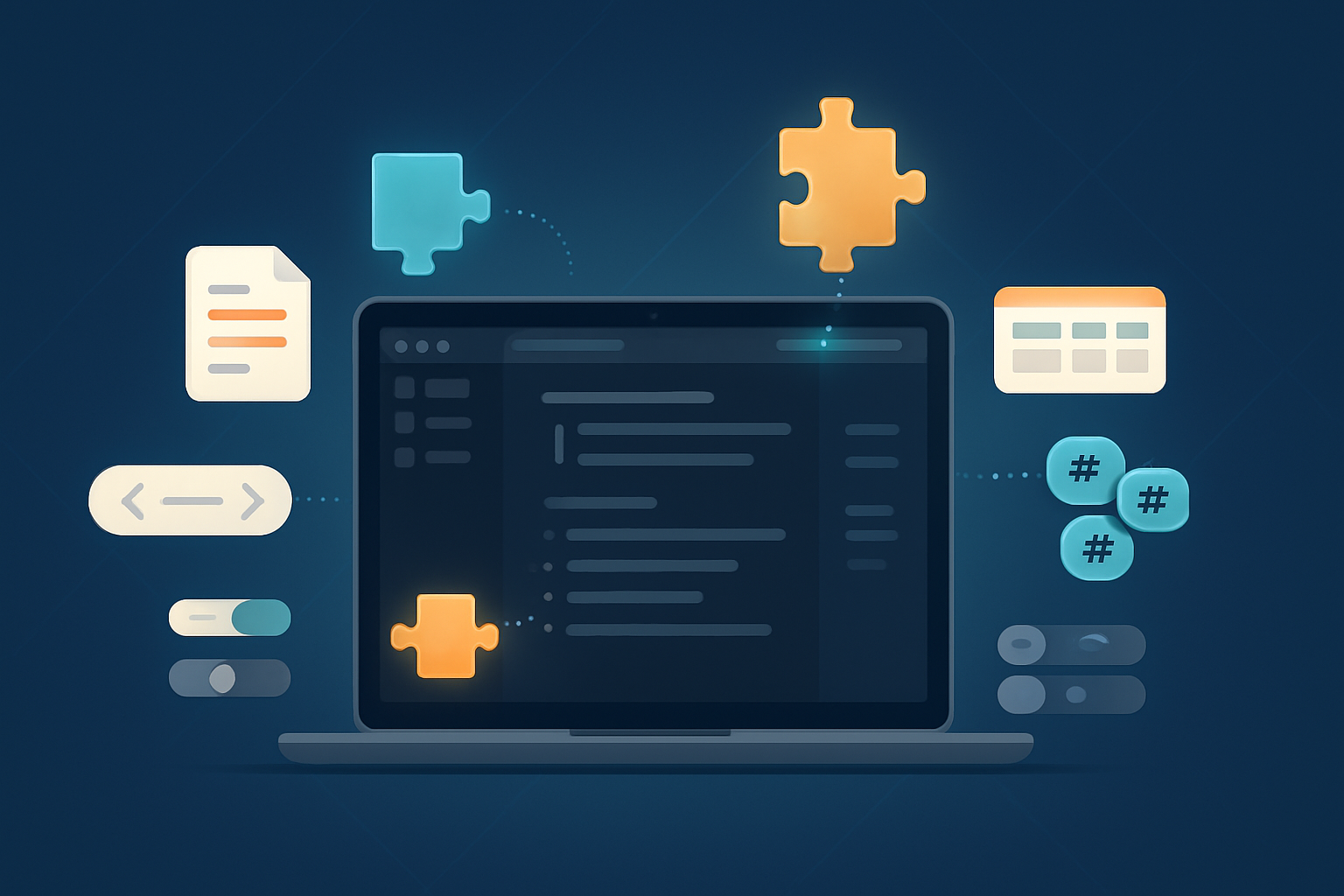· productivity · 6 min read
The Dark Side of Slack: How Over-Communication Can Hinder Productivity
Slack can speed up coordination - and also destroy focus. This article explains how excessive messaging harms attention and output, points to evidence, and gives a practical, step-by-step blueprint for fostering healthier Slack habits that prioritize quality communication over frantic quantity.

What you’ll get from this post
You can make Slack quieter and make your team far more productive. Faster decisions. Longer stretches of deep work. Less context switching. More finished work. Read on for why Slack often fails those goals, how to spot the damage, and a practical, step-by-step playbook to convert noisy chat into purposeful communication.
Why Slack feels great - and why that’s the problem
Slack solves a real problem: fast, flexible coordination. It shortens the loop between question and answer. It helps distributed teams feel connected. It’s energizing. Small wins, delivered often.
But those small wins come with a cost. Short, frequent interruptions fragment attention. They produce a constant dopamine drip. They reward speed and responsiveness over clarity and outcome. Over time the feed of messages becomes less like a tool and more like ambient noise.
The harms are not just anecdotal. Research into interruptions and multitasking shows real cognitive costs. For example, studies of interrupted work find that switching tasks increases completion time and error rates and elevates stress “The Cost of Interrupted Work,” Gloria Mark et al. (2008). The American Psychological Association summarizes how multitasking and frequent task-switching reduce performance and increase cognitive load Multitasking and task-switching. Cal Newport’s Deep Work thesis also underlines a simple truth: deep, focused work produces the most valuable output - and it needs long, uninterrupted stretches of attention Cal Newport - Deep Work.
Symptoms: how over-communication shows up in a team
- Constant pings and unread counts that never fall.
- Messages that ask questions that could have been solved with a quick doc or a scheduled 15-minute sync.
- “Reply-all” style behavior in channels where every message generates dozens of short responses.
- Pressure to be instantly available because the culture rewards quick replies.
- Shallow, reactive work - lots of activity, little shipped.
If these sound familiar, Slack has become a signal amplifier for the wrong behaviors.
Root causes (why teams keep doing this)
- No agreed norms about channel use or expected response times. People default to messaging because it’s low-friction.
- A culture that equates busyness with productivity and visibility with value.
- Poor tooling habits - private messages for group decisions, no threads, notifications set to “bubble” constantly.
- Lack of documentation and async-first expectations. If you don’t know where to look for answers, you message.
The goal: quality over quantity
You’re not trying to kill Slack. You’re trying to make it purposeful. The aim is threefold:
- Reduce unnecessary interruptions.
- Encourage clearer, higher-signal messages.
- Protect blocks of time for deep work and measurable outputs.
A practical playbook: rules, templates, and rollout
Below is a playbook you can adopt and adapt. Pick the items that match your team’s size and stage.
1) Set a small set of channel rules
Make rules visible in a Channel Purpose or a shared handbook. Keep them short and widely communicated.
Example channel rules (paste into #README or channel topic):
#general: announcements only. No replies unless required.
#product: async updates, threads for feature discussion. Use the product spec doc for decisions.
#helpdesk: ask for help with one question per thread; include screenshots and steps to reproduce.
Direct messages: for truly private or time-sensitive matters.2) Introduce a simple message taxonomy
Encourage people to format messages so readers can triage quickly.
Message template (use as a copyable snippet):
TL;DR: One-sentence summary of request or decision needed.
Context: 2–3 sentences. Link to docs.
Request: What I want from you (answer, review, decision) and by when.
Priority: {High / Normal / Low}Use pinned messages or a quick slash-command snippet with the template.
3) Declare async-first norms and response-time expectations
Agree on default expected response windows: e.g., 2–4 hours for non-urgent channel messages, same day for important items, 24–48 hours for low-priority threads. Reserve “urgent” for true emergencies.
4) Protect deep work blocks at the org level
Encourage calendar-based focus blocks and set organization-wide Quiet Hours when notifications are silenced. Leaders should model this behavior by not sending messages expecting immediate replies during those windows. Consider a weekly “no-meeting / deep-work” day or half-day.
5) Use Slack features intentionally
- Encourage threads for discussions to keep channels scannable.
- Use statuses and Do Not Disturb (DND) - and respect them. Slack docs explain how to set status and schedule DND Slack: set your status and DND.
- Use reminders (/remind) and pinned messages to avoid re-messaging.
- Consider channel-level notification settings (only mentions, keywords, etc.).
6) Move decisions to better places
If a decision needs context, move it to a short doc or use a lightweight decision log. Use Slack to notify people when a draft is ready, not as the repository for the final decision.
7) Train and onboard for communication literacy
Run a short workshop or include a 30-minute module in onboarding that explains the new norms, templates, and why they matter. Use the Atlassian Team Playbook for templates and exercises to align teams Atlassian Team Playbook.
8) Lead by example
Leaders set the culture. Model async-first replies, avoid 2 AM pings, and praise thoughtful, concise messages publicly.
A 6-week rollout plan (practical timeline)
Week 1: Leadership alignment. Agree on rules and response-time policy.
Week 2: Publish channel rules, pin templates, and set DND defaults.
Week 3: Run a 30-minute all-hands or workshop on the new norms.
Week 4: Start enforcing gently: encourage threads, redirect noisy conversations to docs.
Week 5: Collect feedback and adjust. Share wins (examples of reduced pings, faster decisions).
Week 6: Measure and iterate.
Quick wins you can apply today
- Mute notifications for channels you don’t need.
- Add a TL;DR at the top of messages.
- Replace single-line questions with a short doc link when context is required.
- Use scheduled messages for non-urgent updates so people aren’t woken by late-night activity.
How to measure success (metrics that matter)
- Hours of uninterrupted focus time per engineer or team (via self-report or scheduling tools).
- Number of messages per day in core product channels (should decline initially).
- Time-to-decision on key workflows (should improve).
- Employee sentiment on interruptions and focus (pulse survey).
- Output metrics - features completed, bugs closed, OKR progress (real work delivered).
Measure outcomes, not activity. Fewer messages that lead to more shipped work is success.
Pushback you’ll hear - and how to counter it
- “But Slack is how we stay connected.” - Agree. Keep social channels but set expectations (social = optional).
- “It slows us down.” - It slows busywork. It speeds meaningful work. Track decision time and outcomes to show improvements.
- “People won’t change.” - They will if leaders model the behavior and systems make the desired behavior easy.
Case example (short)
A mid-size engineering team reduced channel noise by 35% after instituting thread-only discussions for feature design, a two-hour daily focus window, and a simple TL;DR template. The result: fewer interruptions and a measurable increase in completed pull requests per sprint. The change wasn’t about policing; it was about clarity.
Final checklist before you start
- Create and publish 3–5 channel rules.
- Add a TL;DR template as a pinned message.
- Schedule organization-wide Quiet Hours or focus blocks.
- Train teams with a 30-minute session.
- Measure before and after for outcomes.
Parting thought
Slack is powerful because it amplifies human connection. But when it amplifies noise instead of value, it becomes the enemy of productivity. Choose clarity over chatter. Coach short messages that lead to decisive outcomes. Protect attention the way you protect code and customers. Quality of communication is the multiplier - not the volume.


